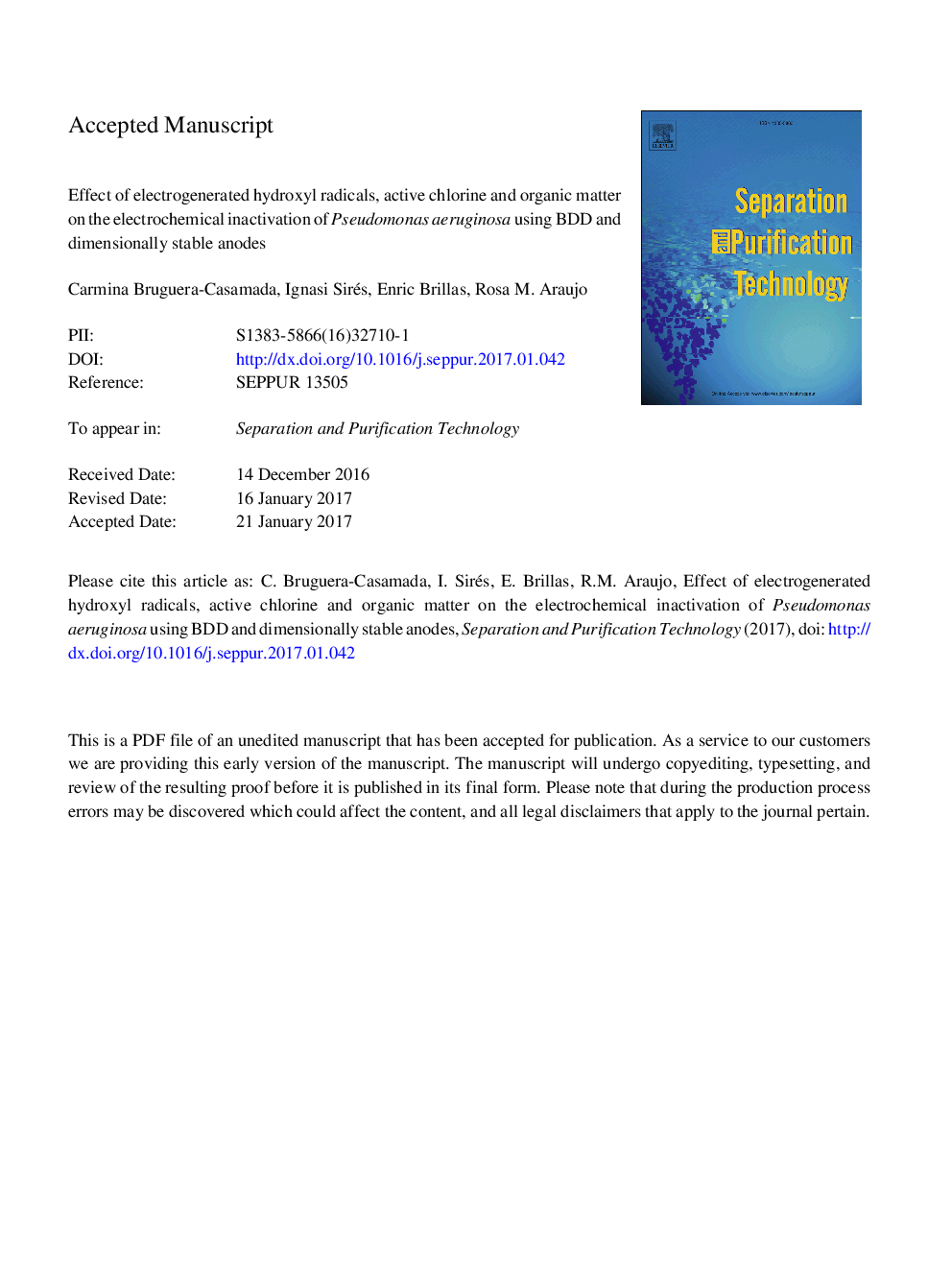| کد مقاله | کد نشریه | سال انتشار | مقاله انگلیسی | نسخه تمام متن |
|---|---|---|---|---|
| 4990042 | 1456942 | 2017 | 31 صفحه PDF | دانلود رایگان |
عنوان انگلیسی مقاله ISI
Effect of electrogenerated hydroxyl radicals, active chlorine and organic matter on the electrochemical inactivation of Pseudomonas aeruginosa using BDD and dimensionally stable anodes
دانلود مقاله + سفارش ترجمه
دانلود مقاله ISI انگلیسی
رایگان برای ایرانیان
کلمات کلیدی
موضوعات مرتبط
مهندسی و علوم پایه
مهندسی شیمی
تصفیه و جداسازی
پیش نمایش صفحه اول مقاله

چکیده انگلیسی
In this work, the disinfection of 100 mL of 106 CFU mLâ1Pseudomonas aeruginosa suspensions at pH 5.8 by electrochemical oxidation at 33.3 mA cmâ2 is reported. The undivided electrolytic cell was equipped with either a boron-doped diamond (BDD) or an IrO2-based or RuO2-based dimensionally stable anode and a stainless steel cathode. Physisorbed hydroxyl radicals M(OH) formed from anodic water oxidation and active chlorine generated from anodic Clâ oxidation were the main oxidizing species in pure Na2SO4 medium and in the presence of NaCl, respectively. A faster inactivation was always found using the dimensionally stable anodes. In 7 mM Na2SO4, this behavior was associated to the much larger adsorption of the bacteria onto the anode, which accelerated the M(OH)-mediated oxidation and inactivation of the cells. The inactivation rate was strongly enhanced in 7 mM Na2SO4 + 1 mM NaCl due to the larger oxidation power of active chlorine compared to that of M(OH). The effect of NaCl concentration and current density on the disinfection process was examined with BDD and the best performance was obtained in 7 mM Na2SO4 + 7 mM NaCl at 8.3 mA cmâ2, with total inactivation in 2 min and energy consumption of 0.059 kW h mâ3. The addition of paracetamol in 7 mM Na2SO4 medium inhibited the disinfection at short electrolysis time regardless of the anode, owing to the preferential action of M(OH) on this pollutant. For BDD, the inactivation rate rose over time at higher drug content due to the generation of greater amounts of toxic by-products. For the IrO2-based anode, the progressive formation of toxic and less adsorbable by-products enhanced the process over time, giving rise again to a quicker total disinfection compared to that with BDD.
ناشر
Database: Elsevier - ScienceDirect (ساینس دایرکت)
Journal: Separation and Purification Technology - Volume 178, 7 May 2017, Pages 224-231
Journal: Separation and Purification Technology - Volume 178, 7 May 2017, Pages 224-231
نویسندگان
Carmina Bruguera-Casamada, Ignasi Sirés, Enric Brillas, Rosa M. Araujo,